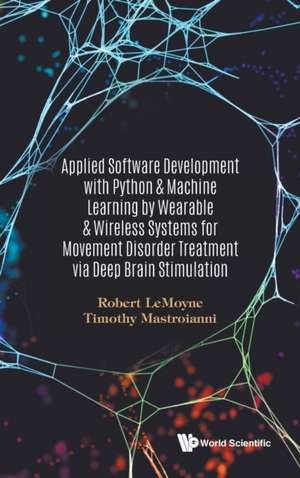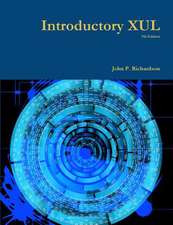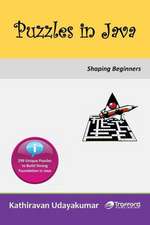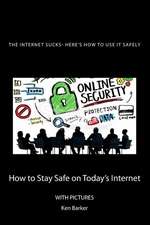Applied Software Development with Python & Machine Learning by Wearable & Wireless Systems for Movement Disorder Treatment Via Deep Brain Stimulation
Autor Robert Lemoyne, Timothy Mastroiannien Limba Engleză Hardback – 22 sep 2021
The book presents the confluence of wearable and wireless inertial sensor systems, such as a smartphone, for deep brain stimulation for treating movement disorders, such as essential tremor, and machine learning. The machine learning distinguishes between distinct deep brain stimulation settings, such as 'On' and 'Off' status. This achievement demonstrates preliminary insight with respect to the concept of Network Centric Therapy, which essentially represents the Internet of Things for healthcare and the biomedical industry, inclusive of wearable and wireless inertial sensor systems, machine learning, and access to Cloud computing resources.
Imperative to the realization of these objectives is the organization of the software development process. Requirements and pseudo code are derived, and software automation using Python for post-processing the inertial sensor signal data to a feature set for machine learning is progressively developed. A perspective of machine learning in terms of a conceptual basis and operational overview is provided. Subsequently, an assortment of machine learning algorithms is evaluated based on quantification of a reach and grasp task for essential tremor using a smartphone as a wearable and wireless accelerometer system.
Furthermore, these skills regarding the software development process and machine learning applications with wearable and wireless inertial sensor systems enable new and novel biomedical research only bounded by the reader's creativity.
Preț: 523.40 lei
Preț vechi: 654.26 lei
-20% Nou
100.16€ • 103.94$ • 83.72£
Carte tipărită la comandă
Livrare economică 17-31 martie
Specificații
ISBN-10: 9811235953
Pagini: 248
Dimensiuni: 157 x 235 x 18 mm
Greutate: 0.5 kg
Editura: World Scientific Publishing Company
Descriere
The book presents the confluence of wearable and wireless inertial sensor systems, such as a smartphone, for deep brain stimulation for treating movement disorders, such as essential tremor, and machine learning. The machine learning distinguishes between distinct deep brain stimulation settings, such as 'On' and 'Off' status. This achievement demonstrates preliminary insight with respect to the concept of Network Centric Therapy, which essentially represents the Internet of Things for healthcare and the biomedical industry, inclusive of wearable and wireless inertial sensor systems, machine learning, and access to Cloud computing resources.
Imperative to the realization of these objectives is the organization of the software development process. Requirements and pseudo code are derived, and software automation using Python for post-processing the inertial sensor signal data to a feature set for machine learning is progressively developed. A perspective of machine learning in terms of a conceptual basis and operational overview is provided. Subsequently, an assortment of machine learning algorithms is evaluated based on quantification of a reach and grasp task for essential tremor using a smartphone as a wearable and wireless accelerometer system.
Furthermore, these skills regarding the software development process and machine learning applications with wearable and wireless inertial sensor systems enable new and novel biomedical research only bounded by the reader's creativity.














